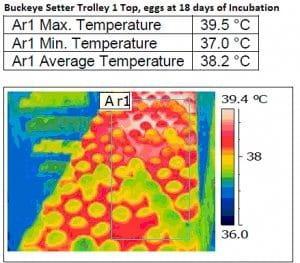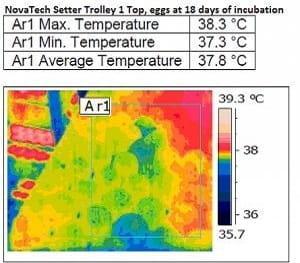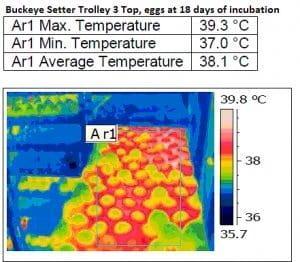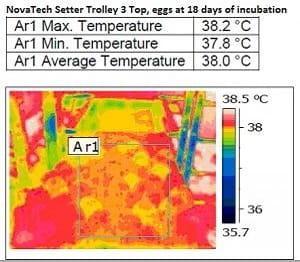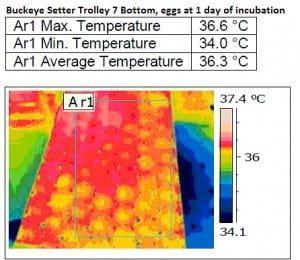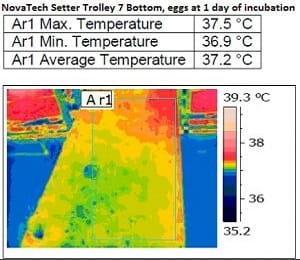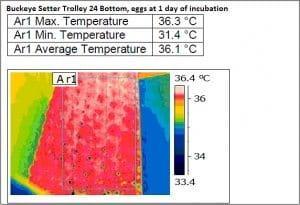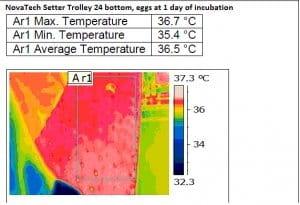Surely a multistage environment can never compare to that of a single stage for performance and chick quality? Well maybe not entirely but think again. The EmTech NovaTech Setter has proved to have a very tight temperature bandwidth and consistently shows excellent results. This is due to the unique design of its, high performing, air circulation fans and smooth, high capacity, cooling coils and precise, sectional, temperature control and unique cabinet design. While multistage setters may be a compromise when compared to single stage, its success and performance is dependent, crucially, on the efficiency of heat transfer. This, in effect, is the ability to remove heat from the exothermic embryos at the later stages of development and thereby benefiting the endothermic embryos during the early embryonic stages.
It must be accepted that there will always be some deviation in temperature within any setter. Such deviations tend to be greatest at the extremities of the cabinet such as the corners. The bottom tray of trolley 23 and 24 is one such area where the deviation will tend to be at its highest. The design of a multistage setter is extremely important so that such deviations are minimized as much as possible.
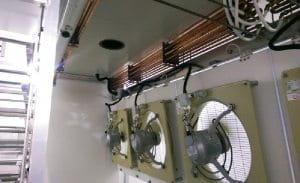
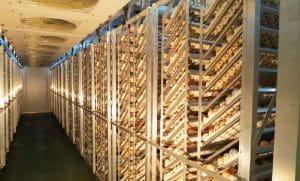
High egg shell temperatures within the setter cabinet can result in late deaths and poor chick quality. Conversely, low egg shell temperatures for the freshly set eggs can result in dragging hatches and a prolonged hatch window.
There is no better test of a setter’s ability to transfer heat than that of egg shell temperature measurement. Thermal Imaging is a great way to check a setter’s thermal characteristics. For optimum performance, egg shell temperatures should ideally be within a range of 37.8°C to 38.3°C. As previously stated, this is very much dependent on the setter’s ability to create a good airflow and to efficiently transfer heat from embryos at the later stages of incubation to the embryos during the early stages of incubation, with the excess heat removed by the cooling system.
The thermal imaging comparisons that EmTech has conducted are extremely conclusive. With embryos at 18 days of incubation the Buckeye Setter shows maximum egg shell temperatures of 39.5°C and 39.3°C. Whereas for the EmTech NovaTech Setter, measurements from the same trolley and tray positions show maximum egg shell temperatures of 38.3°C and 38.2°C. That is 1.2°C cooler and, consequently, produces better chick uniformity and chick quality.
If we now focus on the early stages of incubation. For embryos at only 1 day of incubation the Buckeye Setter shows average egg shell temperatures of 36.3°C and 36.6°C, while for the NovaTech Setter measurements from the same trolley and tray positions show average egg shell temperatures of 36.7°C to 37.5°C. That is 1.1°C warmer which will compresses the hatch window giving improved chick uniformity and quality.
The temperature set-point for both the Buckeye and NovaTech setters was 37.3°C.
Buckeye and NovaTech comparison
